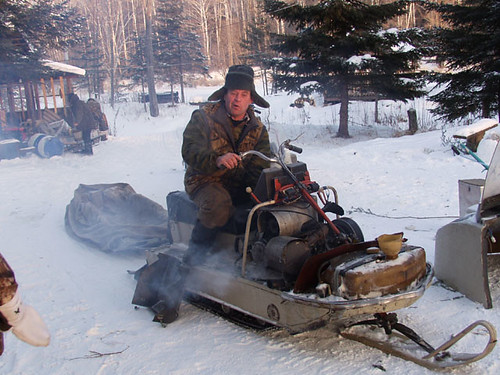Wednesday, December 15, 2004
Rock, Paper, Beer

 Rock
Rock
When asked why he chose to minor in Geology, my son (NOT pictured here) looked at me, shook his head in that "You poor, poor man" sort of way, and said, "Because rocks move very slowly." Now, one has to know that my continually-evolving son proceeds at glacial speed. This rate is necessary since he walks with non-tied shoes, size 36 waist pants for a 33 inch waist, and views belts as an oppression of the masses. Any speed above glacial could result in an accident requiring casts & crutches, thereby reducing his glacial speed to the speed of....rocks. So, his reply regarding Geology showed quite a bit of forethought on his part. If, one day, he accidently tied his shoes and belted his pants and thus propelled himself into a pedestrian pace, some speed-induced bone-breaking event was sure to follow. What career could he enter that would then allow him to work & to snail (appreciate life in the slow lane)?
Geology!
In addition, what other field seems to have professors who seem so damn happy? Just looking at some of his profs at Denison U.'s Dept of Geology site tells the story. These guys look lively, happy, contented.
Geology seemed to offer something different, aside from the great educational trips to locations of seclusion and quiet. But, what was it?
Paper
And then, this week, in the NYT Tuesday Science section, there was an article regarding rocks and beer. That "special something" started to become clear, as clear as a golden ale. (I'll reprint the article here, so you don't have to do the login thing)
"With Great Beer, It's All in the Rocks (and That Doesn't Mean Ice)
By KENNETH CHANG
Published: NYT December 14, 2004
DENVER - The refreshing bitterness of an English pale ale, the clean light taste of a Pilsener, the dark, almost burnt graininess of Irish stout. To Dr. Alex Maltman (you can't be serious!?!?! This IS his real name?), these are prime illustrations of the power of geology.
Wine connoisseurs often talk of terroir - a French word expressing the notion that vineyard soils impart flavors to the finished wines. But data to back up the notion is sketchy, said Dr. Maltman, a professor of earth sciences at the University of Wales. And though whiskey distillers often make much of the water they use, there is little correlation between the taste of whiskey and the geology of where it is made, he said.
Beer and geology, on the other hand, are closely entwined, Dr. Maltman said last month at a seminar on geology and beer held at a meeting of the Geological Society of America.
For one, geologists drink lots of beer, typically ending a long day examining rocks with a trip to the nearest bar. Mayor John W. Hickenlooper of Denver, a former geologist turned pub owner, told the geologists how an earlier geology meeting in 1988 bolstered his fledgling microbrewery. (Emphasis added for potential Geology majors)
And as Dr. Maltman got up to talk, two-thirds of the audience also got up and headed for the lobby, where Denver microbreweries were handing out samples in small cups.
"I'd like to suggest this evening, to the people who remain, that in fact it is with beer that there is the most direct link between the drink and geology," Dr. Maltman said.
Beer is more than 90 percent water, and because almost all brewers use water from wells, not rivers or lakes, the different styles of beer were traditionally derived from the rocks that the breweries sat upon.
Today beer is usually thought of as an unchanging product. But much scientific research and technological effort have been put into achieving that consistency from agricultural ingredients that change from year to year and season to season.
"There's a lot of science going on about beer," said Dr. Charles Bamforth, a professor of brewing science at the University of California at Davis. "The scientific understanding of beer is better understood than that of wine. It has been studied for many, many years in considerable details in a number of locations around the world."
Beer of various varieties has been drunk for thousands of years. The Epic of Gilgamesh, a king from the third millennium B.C. who ruled a land that is part of modern Iraq, mentions beer.
In the New World, archaeologists reported finding a hall in the Andes of Peru this summer with 20 brewing vats more than 1,000 years old. The brewery could be the oldest known tangible remnant of "large-scale state-sponsored institutional brewing," said Dr. Patrick Ryan Williams, an assistant curator at the Field Museum in Chicago.
The brewery produced an Andean beer called chicha from berries of the Peruvian pepper tree. The output, several hundred gallons at a time, had to be consumed quickly, at large feasts, because chicha turned bad within a week. "They came to the beer," Dr. Williams said. "It wasn't your typical bottle-and-export kind."
Beer is, by definition, alcohol fermented from grain, and most beer today is fermented from barley that is partially germinated, or malted. Hops, a type of flower, is added to give a bitter, fruity taste to the beer.
When commercial beer making started in the 19th century in Europe, brewmasters came across a problem similar to those experienced by the Andean brewers, that the beer spoiled easily. Yet there were places that were exceptions. Burton-on-Trent in England was one, a small town that had more than 30 breweries, producing a style of beer called pale ale or English bitter.
"Let's not forget at this time beer was not pasteurized," Dr. Maltman said. "Burton beer, somehow, did travel well. The supposition was that it was the water, but it was some decades before it was demonstrated what was going on."
Burton-on-Trent sits on sandstone rich in minerals like gypsum from water that had percolated through the rocks long ago. The waters had a pH of 5 to 5.5, ideal for extracting sugars from malted barley steeped in warm water, an important step known as mashing.
"This is why the Burton waters were so good for brewing," Dr. Maltman said. "It turned out they had a very high mineral content, but just in the right balance to get the right acidity for good leeching, good mashing. The balance of fermentable sugars has everything to do with the flavors and the kind of beer that results. The mashing stage is crucial."
The water was also rich in sulfates, which acted as a preservative, allowing the beer to be shipped to distant locations, even India - the Burton beers were called India pale ales, or I.P.A. for short. "The I.P.A. style came about because of the geology on which Burton was sited," Dr. Maltman said.
Today, any brewer anywhere can produce India pale ales by adding minerals to - or "burtonizing" - the water to match what burbles in Burton-on-Trent naturally."
Beer!!!
So, now when my continually-evolving son says he's going on a Geology field trip, the destinations are endless. It could be Death Valley, Ironbound Island in Maine, the Dew Drop Inn, Sudbury Structure, or Hank's Bending Elbow Salve Emporium. And he could legitimately state he's doing college credit research.
Damn!
Where was MY college counsellor when career crossroads needed to be navigated ?

 Rock
Rock
When asked why he chose to minor in Geology, my son (NOT pictured here) looked at me, shook his head in that "You poor, poor man" sort of way, and said, "Because rocks move very slowly." Now, one has to know that my continually-evolving son proceeds at glacial speed. This rate is necessary since he walks with non-tied shoes, size 36 waist pants for a 33 inch waist, and views belts as an oppression of the masses. Any speed above glacial could result in an accident requiring casts & crutches, thereby reducing his glacial speed to the speed of....rocks. So, his reply regarding Geology showed quite a bit of forethought on his part. If, one day, he accidently tied his shoes and belted his pants and thus propelled himself into a pedestrian pace, some speed-induced bone-breaking event was sure to follow. What career could he enter that would then allow him to work & to snail (appreciate life in the slow lane)?
Geology!
In addition, what other field seems to have professors who seem so damn happy? Just looking at some of his profs at Denison U.'s Dept of Geology site tells the story. These guys look lively, happy, contented.
Geology seemed to offer something different, aside from the great educational trips to locations of seclusion and quiet. But, what was it?
Paper
And then, this week, in the NYT Tuesday Science section, there was an article regarding rocks and beer. That "special something" started to become clear, as clear as a golden ale. (I'll reprint the article here, so you don't have to do the login thing)
"With Great Beer, It's All in the Rocks (and That Doesn't Mean Ice)
By KENNETH CHANG
Published: NYT December 14, 2004
DENVER - The refreshing bitterness of an English pale ale, the clean light taste of a Pilsener, the dark, almost burnt graininess of Irish stout. To Dr. Alex Maltman (you can't be serious!?!?! This IS his real name?), these are prime illustrations of the power of geology.
Wine connoisseurs often talk of terroir - a French word expressing the notion that vineyard soils impart flavors to the finished wines. But data to back up the notion is sketchy, said Dr. Maltman, a professor of earth sciences at the University of Wales. And though whiskey distillers often make much of the water they use, there is little correlation between the taste of whiskey and the geology of where it is made, he said.
Beer and geology, on the other hand, are closely entwined, Dr. Maltman said last month at a seminar on geology and beer held at a meeting of the Geological Society of America.
For one, geologists drink lots of beer, typically ending a long day examining rocks with a trip to the nearest bar. Mayor John W. Hickenlooper of Denver, a former geologist turned pub owner, told the geologists how an earlier geology meeting in 1988 bolstered his fledgling microbrewery. (Emphasis added for potential Geology majors)
And as Dr. Maltman got up to talk, two-thirds of the audience also got up and headed for the lobby, where Denver microbreweries were handing out samples in small cups.
"I'd like to suggest this evening, to the people who remain, that in fact it is with beer that there is the most direct link between the drink and geology," Dr. Maltman said.
Beer is more than 90 percent water, and because almost all brewers use water from wells, not rivers or lakes, the different styles of beer were traditionally derived from the rocks that the breweries sat upon.
Today beer is usually thought of as an unchanging product. But much scientific research and technological effort have been put into achieving that consistency from agricultural ingredients that change from year to year and season to season.
"There's a lot of science going on about beer," said Dr. Charles Bamforth, a professor of brewing science at the University of California at Davis. "The scientific understanding of beer is better understood than that of wine. It has been studied for many, many years in considerable details in a number of locations around the world."
Beer of various varieties has been drunk for thousands of years. The Epic of Gilgamesh, a king from the third millennium B.C. who ruled a land that is part of modern Iraq, mentions beer.
In the New World, archaeologists reported finding a hall in the Andes of Peru this summer with 20 brewing vats more than 1,000 years old. The brewery could be the oldest known tangible remnant of "large-scale state-sponsored institutional brewing," said Dr. Patrick Ryan Williams, an assistant curator at the Field Museum in Chicago.
The brewery produced an Andean beer called chicha from berries of the Peruvian pepper tree. The output, several hundred gallons at a time, had to be consumed quickly, at large feasts, because chicha turned bad within a week. "They came to the beer," Dr. Williams said. "It wasn't your typical bottle-and-export kind."
Beer is, by definition, alcohol fermented from grain, and most beer today is fermented from barley that is partially germinated, or malted. Hops, a type of flower, is added to give a bitter, fruity taste to the beer.
When commercial beer making started in the 19th century in Europe, brewmasters came across a problem similar to those experienced by the Andean brewers, that the beer spoiled easily. Yet there were places that were exceptions. Burton-on-Trent in England was one, a small town that had more than 30 breweries, producing a style of beer called pale ale or English bitter.
"Let's not forget at this time beer was not pasteurized," Dr. Maltman said. "Burton beer, somehow, did travel well. The supposition was that it was the water, but it was some decades before it was demonstrated what was going on."
Burton-on-Trent sits on sandstone rich in minerals like gypsum from water that had percolated through the rocks long ago. The waters had a pH of 5 to 5.5, ideal for extracting sugars from malted barley steeped in warm water, an important step known as mashing.
"This is why the Burton waters were so good for brewing," Dr. Maltman said. "It turned out they had a very high mineral content, but just in the right balance to get the right acidity for good leeching, good mashing. The balance of fermentable sugars has everything to do with the flavors and the kind of beer that results. The mashing stage is crucial."
The water was also rich in sulfates, which acted as a preservative, allowing the beer to be shipped to distant locations, even India - the Burton beers were called India pale ales, or I.P.A. for short. "The I.P.A. style came about because of the geology on which Burton was sited," Dr. Maltman said.
Today, any brewer anywhere can produce India pale ales by adding minerals to - or "burtonizing" - the water to match what burbles in Burton-on-Trent naturally."
Beer!!!
So, now when my continually-evolving son says he's going on a Geology field trip, the destinations are endless. It could be Death Valley, Ironbound Island in Maine, the Dew Drop Inn, Sudbury Structure, or Hank's Bending Elbow Salve Emporium. And he could legitimately state he's doing college credit research.
Damn!
Where was MY college counsellor when career crossroads needed to be navigated ?
Comments:
Post a Comment
<< Home Verging on Pertinence Just some more disposable thoughts clogging up the hinterlands
<< Home Verging on Pertinence Just some more disposable thoughts clogging up the hinterlands
















